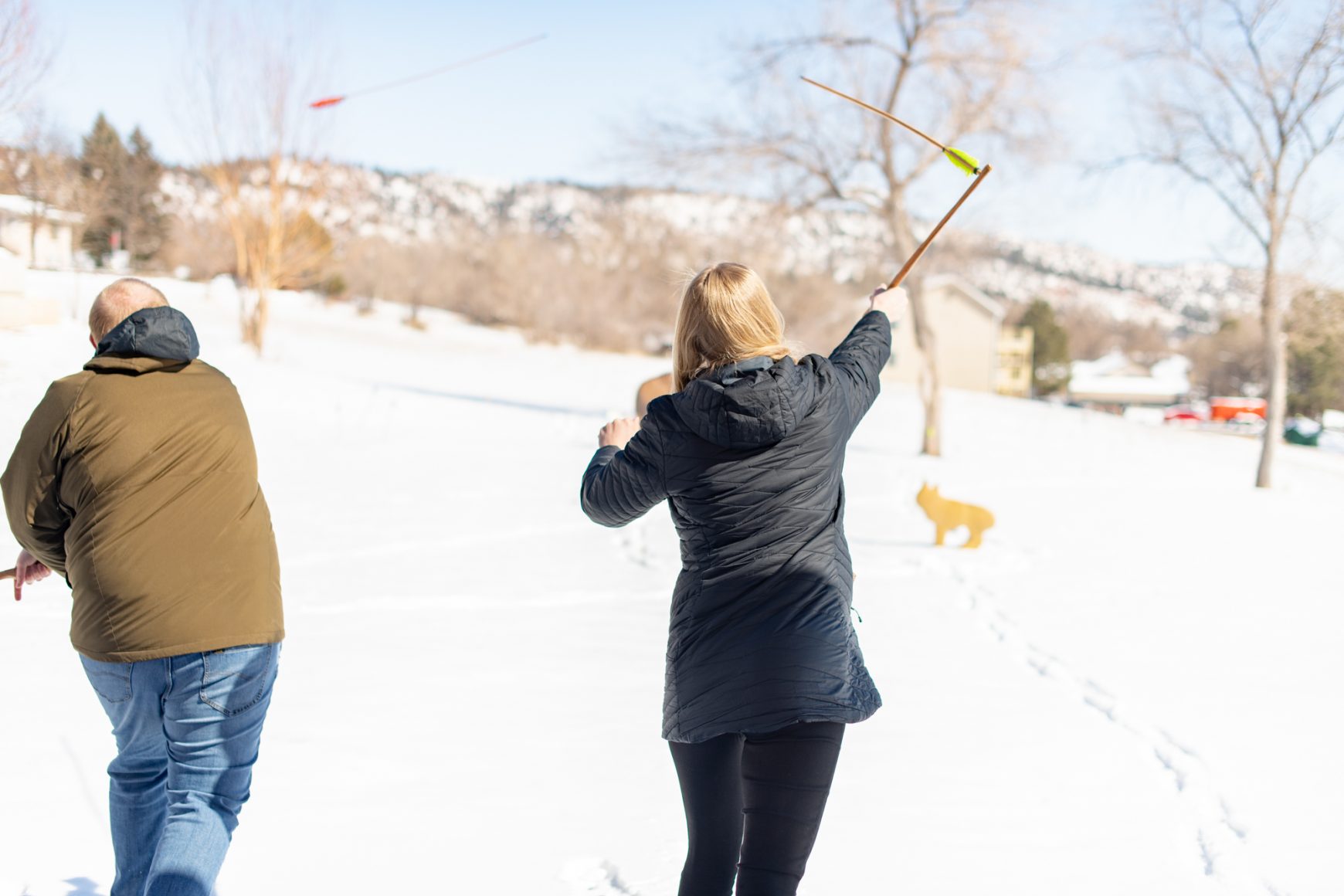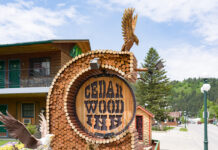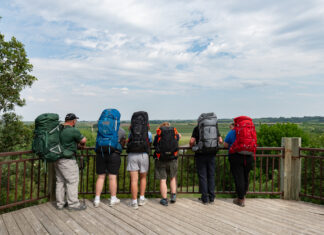Hot Springs is home to an active paleontological dig site, where each new find adds to the history from over 26,000 years ago when The Mammoth Site was merely a sinkhole.
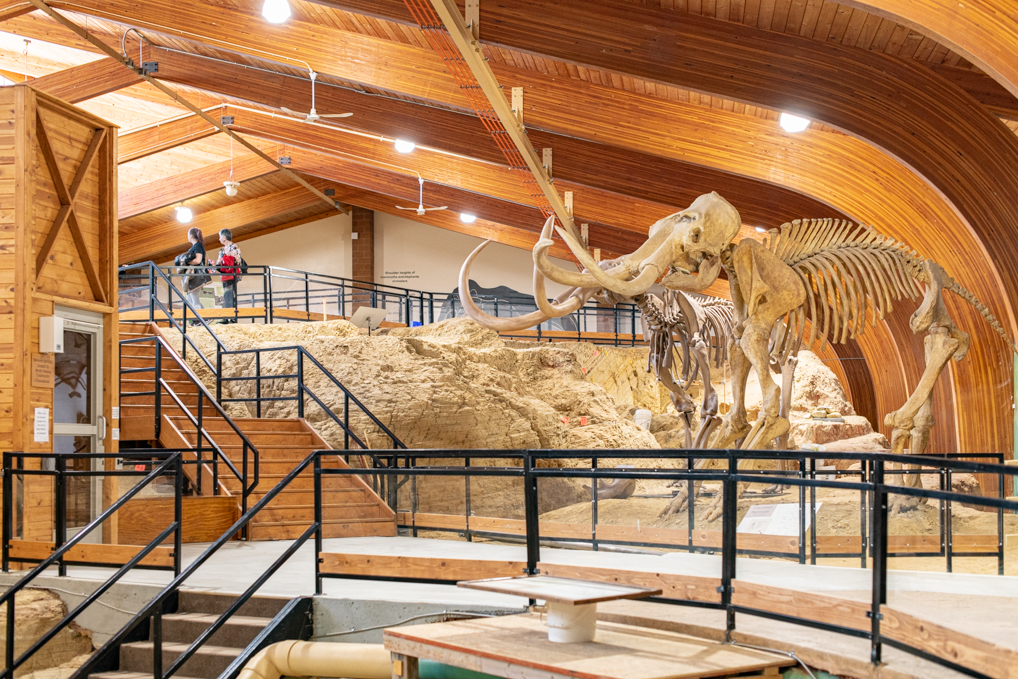
So far, over 1,200 fossils have been unearthed at the site.
“It’s just so incredible that this piece of history is in South Dakota,” said 605’s Alana Snyder. “On top of being a museum, it’s inspiring that it’s still an active site that still has so much to discover.”
“I have been wanting to visit The Mammoth Site since I was a kid, and the fact that I was finally there to see it all in person and hear the history is my favorite part.” – 605‘s Taylor Hanson
Visitors can get involved with various learning opportunities, including summer classes like the Jr. Paleontology Program and Family Dig Program, different STEAM education programs varying by age group, and other hands-on activities.
“We have dig boxes that simulate a dig site where the kids get to dig through sediment and find replicas of mammoths and bear bones,” explained the director of education Seth Vandenberg. “While we do that we talk about why we look for fossils and what a fossil can tell us. That’s for kids ages 4 and up to grandparents in the family classes.”

Alana and Taylor Hanson headed out to try their hands at an Atlatl Throwing Class that is an ancient hunting method taught in the summer.
While The Mammoth Site is too old to show any human activity, educators there work to teach people about the Ice Age.
Around the world, there are different words for the hunting apparatus. At The Mammoth Site, they use “atlatl” to describe the wooden tool used to propel a large dart farther than a human could throw it themselves.
“The atlatl is a piece of wood that either has a hook or a socket that a dart will fit into.” -Seth Vandenberg
“We find evidence of them in a variety of societies across the world,” said Vandenberg. “We talk about where we find atlatls in the world, how they’re used, and what evidence we have of animals hunted with atlatls.”
Though Vandenberg says it’s difficult to be sure what animals may have been hunted with an atlatl, it was likely deer, mammoths, coyotes, and small game, like rabbits and birds. In other areas of the world, the prey varies based on what animals live in the region.


The class begins by defining what an atlatl is before the students get to try using one themselves, aiming to hit a target.
“With atlatls, it’s a natural extension of throwing a projectile by hand,” said Vandenberg.
He says the device is similar to throwing a ball for a dog with a Chuckit! to launch the ball farther than the arm can throw.
After placing the atlatl in your hand, the dart or spear is slid into it, ready to be sent flying from its slot. Then, it’s all about getting down the right timing and technique in releasing the dart, but not the atlatl itself.
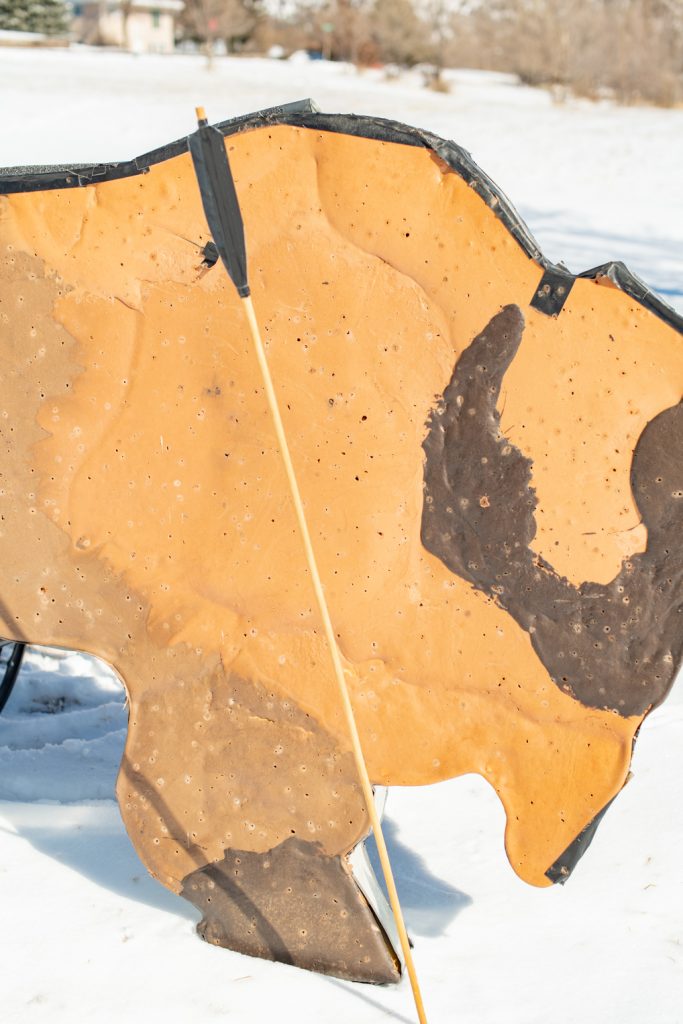
605 Survival
Taylor says she would have survived the Ice Age, as her years of softball experience made her throw more reminiscent of a talented hunter.
Alana, on the other hand, says that she has less-than-impressive aim, and that she’d likely be eaten before she successfully hunts anything.

“I think the most difficult part of the class was trying to keep a good aim and not give up,” said Taylor, adding that she wasn’t able to hit the target this time around. “Now I want to keep visiting and finally hit a target.”
Struggling to hit the target isn’t uncommon.
“So the motion itself feels fairly natural,” said Vandenberg. “Getting to the point where you know exactly where your dart is going to hit is where it becomes a challenge.”
The course is offered to anyone aged 8 years or older.
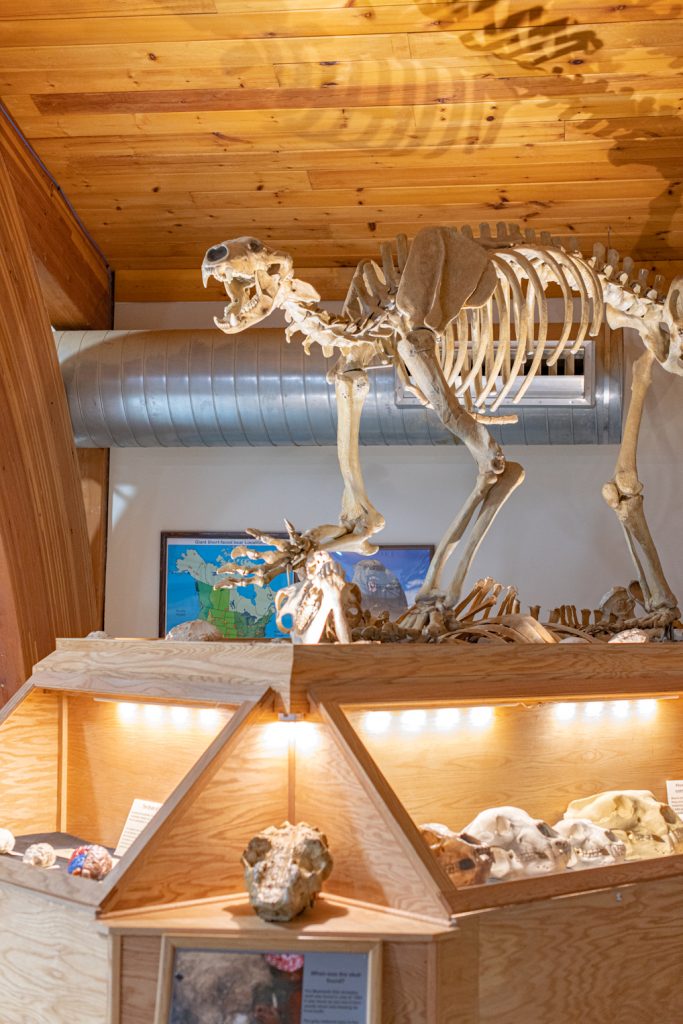
Hands-On Learning
A new addition to The Mammoth Site is the Augmented-Reality Topographic Sandbox that uses sensors, sand, and a projector to show elevation differences and where different fossils may be found. The Stream Table shows how water manipulates landscapes over time.
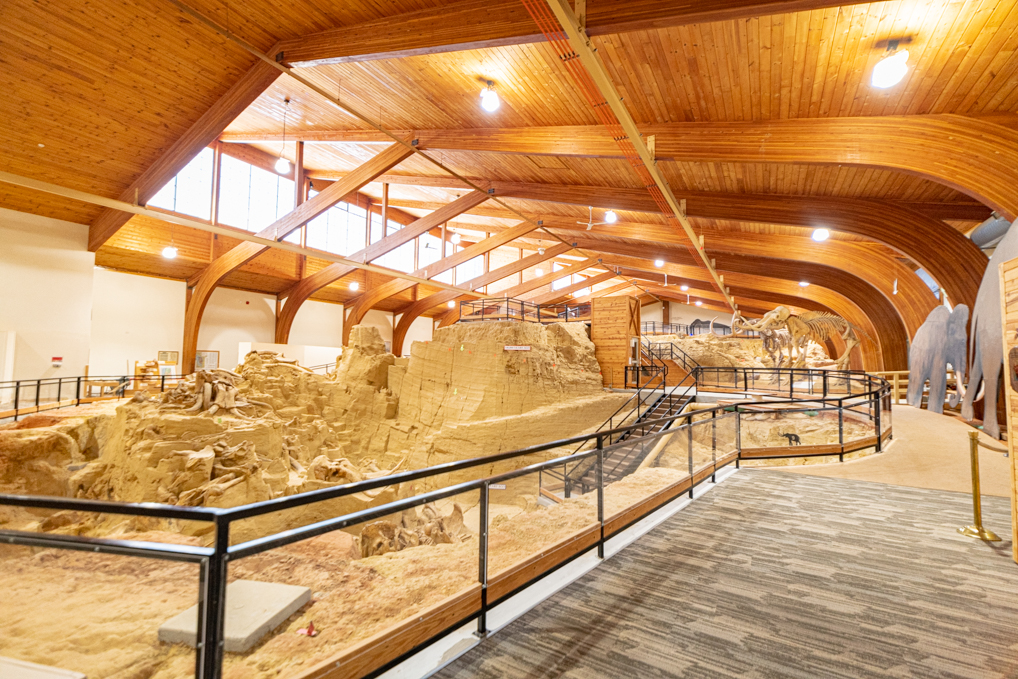
“So we have a lot of family groups that will come in and do it. It’s a popular activity for some of the scout groups we have visit,” said Vandenberg.
To participate in atlatl throwing, everyone must meet the safety standards of the class.
“A big priority is always safety in that everyone is able to have a fun time, but also a safe time,” explained Vandenberg. “Basically, listen to the range officer and bring close-toed shoes to make sure you have your footing.”


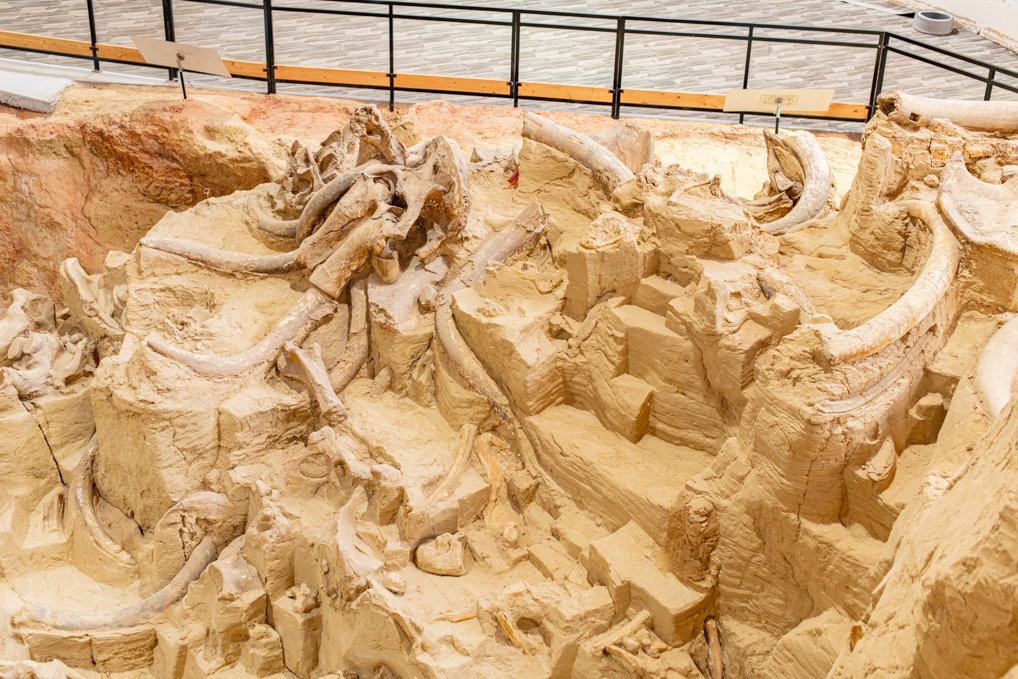
Atlatls are actually still used today. While they have a large hobby following in Canada and Australia like the bow-and-arrow combo, Vandenberg says that certain indigenous groups still use them in their traditional hunts.
“There haven’t been any atlatls found at the Mammoth Site. Our site is too old to show evidence of humans. It’s a learning tool to learn about the late Ice Age, which is why we teach it here.” -Claire Scarborough
Aside from this class, there are many other things to explore, including the bonebed and the Ice Age Exhibit Hall.
“We have a Siberian exhibit with two examples of baby mammoths, [named Lyuma and Dima], that were discovered mummified in permafrost in Siberia,” said public relations coordinator Claire Scarborough.
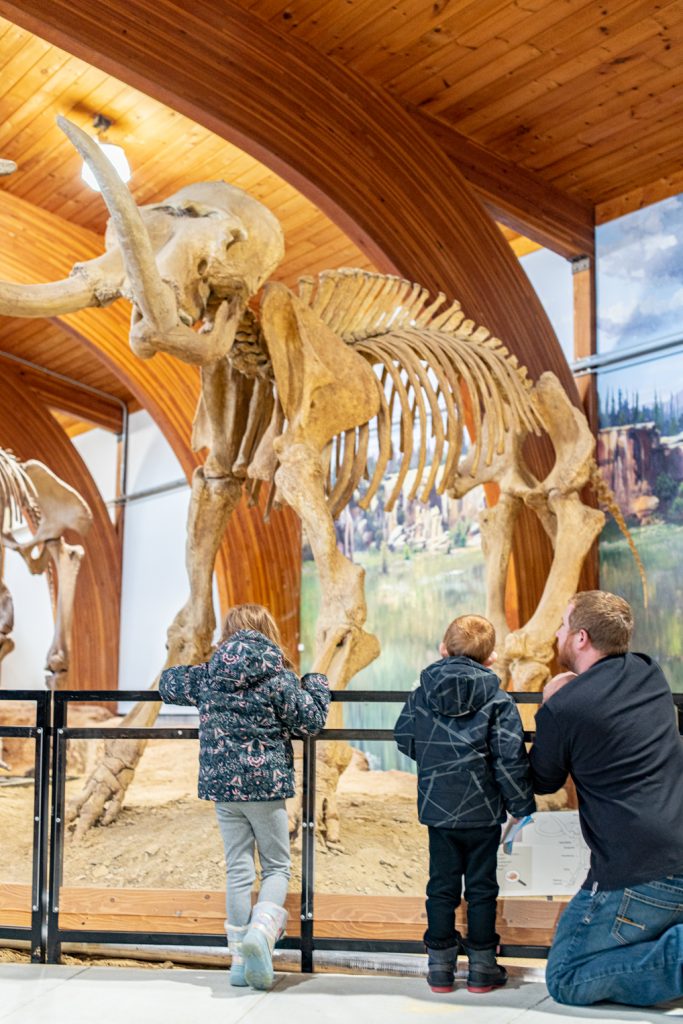
Other exhibits display research projects from The Mammoth Site staff along with other researchers from around the world, explained Scarborough.
“I’ve gone to The Mammoth Site since I was little with my grandparents, and it’s such an experience,” said Alana. “It’s always evolving and has something new for visitors. I can’t wait to bring my child here one day.”
For more information, visit MAMMOTHSITE.ORG


